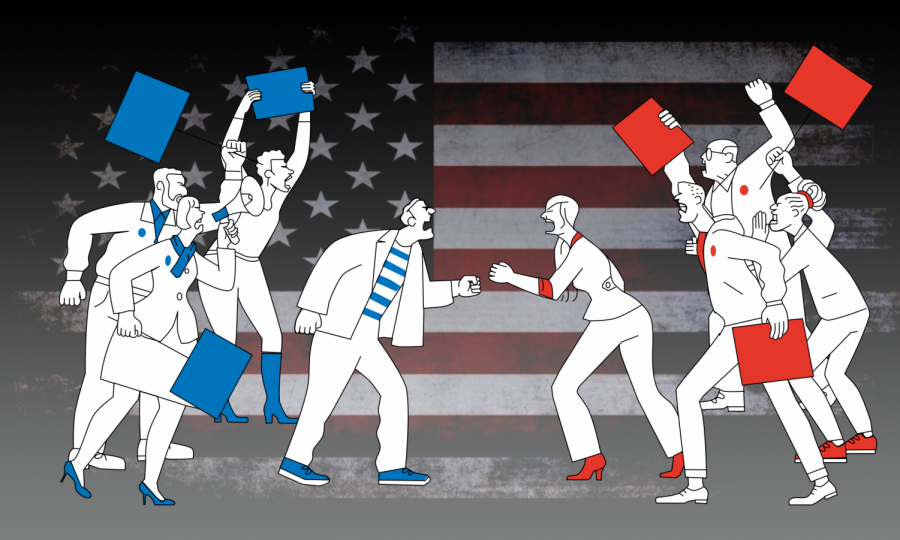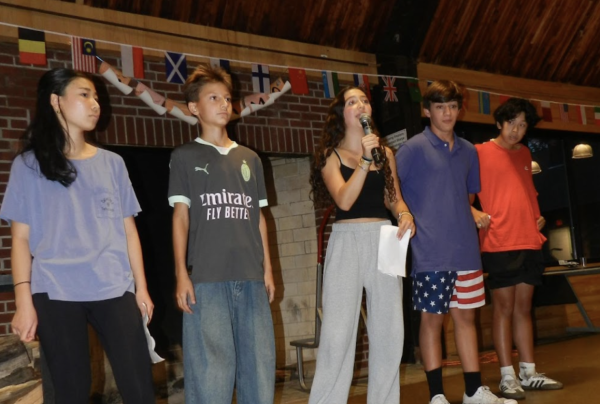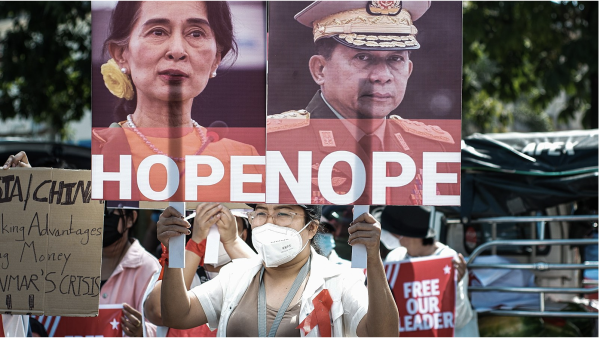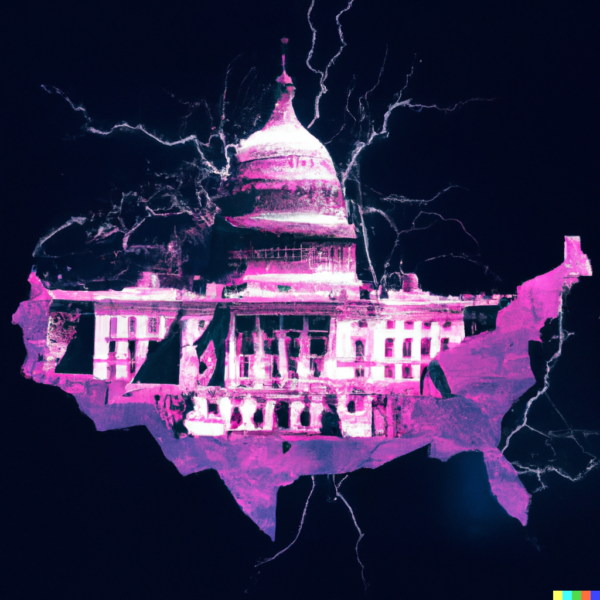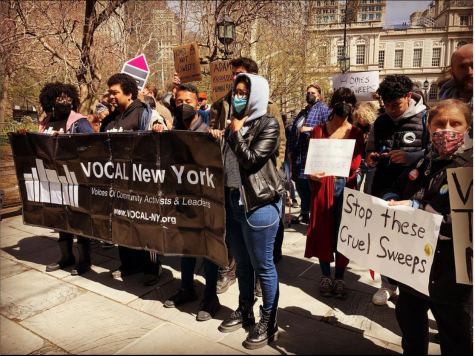Closing the Gap in American Political Polarization
“Existential fear appears to be at the heart of what drives polarization.”
–Kirk Schneider, Ph.D. Columbia University
Over the last 20 years, political polarization and partisan antipathy have been drastically increasing due to numerous factors such as partisan gerrymandering, urbanization, the influence of the internet, the influence of extreme political activists, ingroup bias, and the rise of identity group politics. Since 1994, according to a major study of political views conducted by the Pew Research Center, the percentage of individuals of a specific party holding negative views about the opposite party have doubled, with 43% of Republicans and 38% of Democrats having extremely negative views of the opposing party. Additionally, the study examined how 92% of Republicans are considered more right than the middle Democrats, and 94% of Democrats are considered more left than the middle Republicans. While these divisions are ideological, they heavily impact where people live, who people surround themselves with, and more. The dramatic increase in people who view the opposing party as threatening to the wellbeing of the nation has caused further tensions and has reduced the ability for bipartisan communication. While the main factor that causes further polarization appears to be the political strategy of politicians to ensure votes, numerous factors allow for polarization to develop and flourish such as gerrymandering, which entails manipulating district boundaries to favor a particular political party, and the impact of social media.
Ian Shapiro and Francis McCall Rosenbluth, professors of Political Science at Yale University, have argued that the cause of dramatic political polarization in America is the transfer of power to the grassroots as self organized political movements have been gaining traction as well as the divisive strategies of politicians. They argue that the increase in the influence of the grassroots movements has caused massive distrust in politicians, political parties, and different democratic institutions. Also, the political strategies of politicians rely on moderating voters to extremes to further their political ambitions so that when they are elected they won’t have to mediate their policies. Politicians know that to get the necessary votes to be elected, voters can’t be in the center of the spectrum but rather on extreme ends. A direct example of this strategy can be seen in the 2016 election of Donald Trump in which he directed his rhetoric of how Americans would lose jobs to immigrants on a particularly conservative, politically alienated group of people who were vulnerable to his strategy. The vulnerability and weakness of the GOP ultimately allowed Trump and his extreme rhetoric to take over the political party, which stimulated the rise of extreme right-wing groups and the division between Republicans and Democrats.
Since the advent of the internet and social media, there have been numerous concerns about the threat that online platforms pose to democratic institutions and how they worsen political polarization. The algorithm on several social media platforms caters to the individual engaging with it and therefore the data exposed to that individual will typically coincide with the interests of the user and their peers. Social media feeds expose you to content that aligns itself with your political perspective, feeds you extreme political content, and overall positions the opposing side in a negative way. This is incredibly harmful as the increase in technology has also led to increasing amounts of misinformation and fake news, which further causes these divisions. Rather than incentivizing people to explore numerous perspectives and form their own opinions, social media pushes individuals toward extreme paths and positions one party as superior and the other inferior. Also, individuals who hold extreme views—such as certain activists or members of organizations—are far more politically active in comparison to those who consider themselves moderates or even independents. This causes the majority of the opinions that are featured on social media and the news to be from extreme perspectives, which advertises their ideals and sows division in society. Moreover, mainly hearing the perspective of those with extreme political views causes many people to associate an entire party with a set of ideas. This is misleading and dangerous. The Trump presidency is an example of how an administration used coercion and fear that further caused divisions amongst American citizens to benefit the political career of an individual. Catapulted by the presidency of Trump, the US has been enduring a period of mutual radicalization in which both parties have been driving each other into extremes. As stated by Fathali Moghaddam, Ph.D., “Leaders can be very effective at creating and strengthening mutual radicalization. If that kind of leadership wins out then you’re going to have further mutual radicalization and further polarization and further irrationality in society.”
Partisan gerrymandering and urbanization have been securing specific communities for Republicans or Democrats and dividing urban and rural areas along partisan lines. This means that political parties are divided geographically in a way that ensures that communities are politically homogeneous. The lack of perspective at work, school, and in communities incentivizes people to embrace certain ideas and negatively view opposing views. This comes with an incredible amount of pressure because it makes it harder for people to express their political views if they go against what their community believes.
“Research indicates that the divisiveness will continue to grow if the fear of the other and the wounds fueling that fear are not addressed.”
–Kirk Schneider, Ph.D. at Columbia University
While it is evident that political polarization comes with many consequences, such as the rise of extremist hate groups and violence, as well as threats to democratic institutions, there are numerous practices and ideas that scholars have been researching to diminish the division in America. One major idea would be citizen assemblies, which is when representatives of both political parties come together to have discussions on different socio-political issues. Citizen assemblies could allow for opposing political parties to find common ground and make compromises that go beyond party lines. Another major way in which political polarization could be augmented is altering social media feeds so they expose users to numerous perspectives. This would incentivize individuals to form their own ideas. Also, the regulation of misinformation in which fake news is flagged or banned could help reduce polarization and fear for the opposing side. Lastly, a way to tackle political polarization could be holding referendums on specific issues which would deemphasize political parties and allow people to vote based on policy rather than party.
Ultimately, with these different ideas that can potentially help reduce political polarization, effective change can start with students like you who are determined to have difficult conversations and listen to a plethora of opinions. Qasim Rashid, Democratic candidate for the US House of Representatives, faced protesters in a rally on his campaign trail. Rather than ignoring them, he approached them and had an open and honest conversation. He stated, “Everyone I talked to had different reasons they were supporting my opposition, but we were able to have honest, open discussions. That’s given me a lot of hope that people on both sides are willing to listen, even in this time of extreme polarization.” His ability to have open discussions exemplifies that for either party to be successful and create lasting change, we all need to listen to one another and cooperate.

I am Tatiana Barberi, class of 2022. I'm the Visuals Editor in charge of ensuring that articles published at UNISVerse have images that help reflect the...



